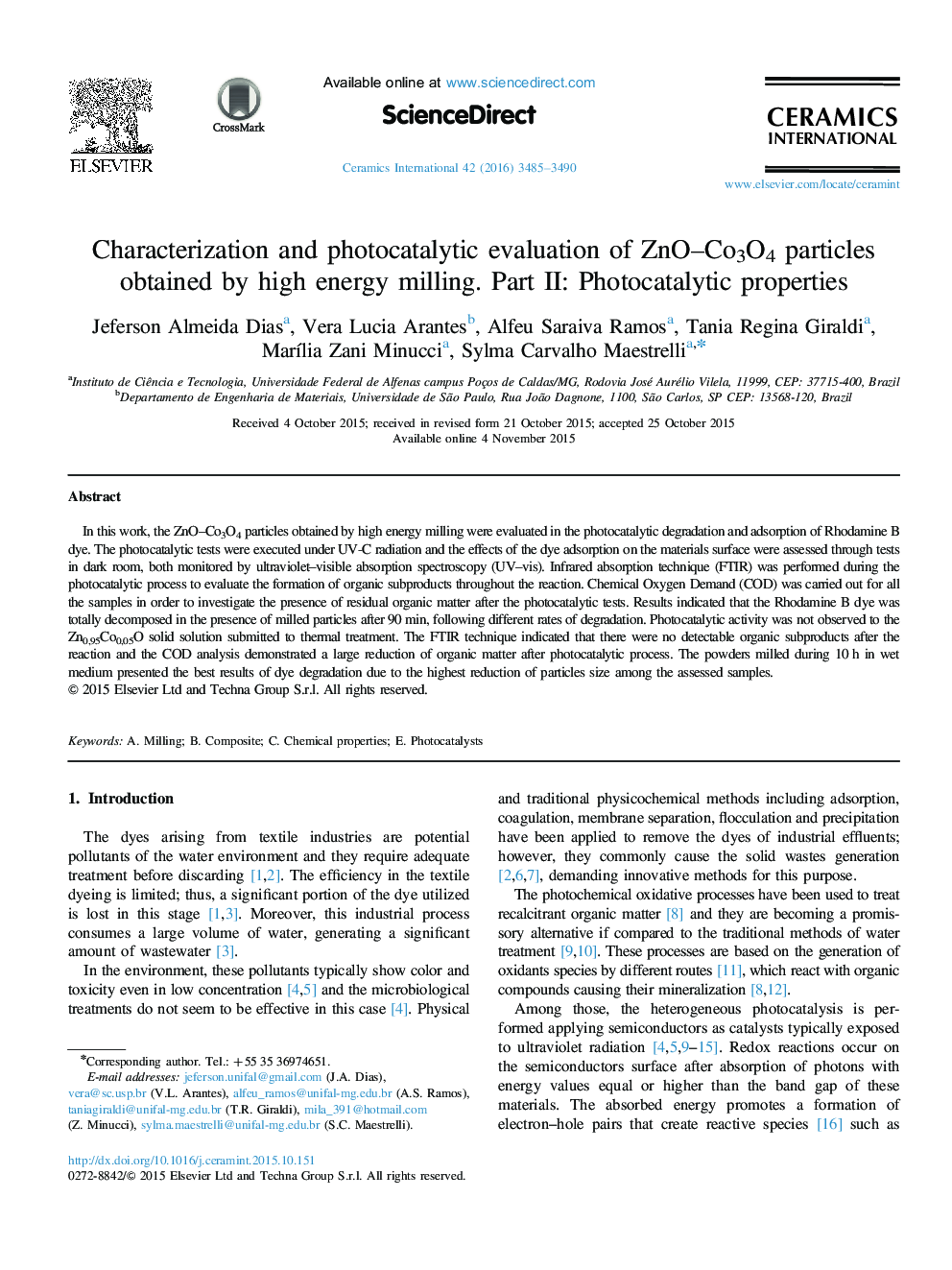| Article ID | Journal | Published Year | Pages | File Type |
|---|---|---|---|---|
| 1459572 | Ceramics International | 2016 | 6 Pages |
In this work, the ZnO–Co3O4 particles obtained by high energy milling were evaluated in the photocatalytic degradation and adsorption of Rhodamine B dye. The photocatalytic tests were executed under UV-C radiation and the effects of the dye adsorption on the materials surface were assessed through tests in dark room, both monitored by ultraviolet–visible absorption spectroscopy (UV–vis). Infrared absorption technique (FTIR) was performed during the photocatalytic process to evaluate the formation of organic subproducts throughout the reaction. Chemical Oxygen Demand (COD) was carried out for all the samples in order to investigate the presence of residual organic matter after the photocatalytic tests. Results indicated that the Rhodamine B dye was totally decomposed in the presence of milled particles after 90 min, following different rates of degradation. Photocatalytic activity was not observed to the Zn0,95Co0,05O solid solution submitted to thermal treatment. The FTIR technique indicated that there were no detectable organic subproducts after the reaction and the COD analysis demonstrated a large reduction of organic matter after photocatalytic process. The powders milled during 10 h in wet medium presented the best results of dye degradation due to the highest reduction of particles size among the assessed samples.
